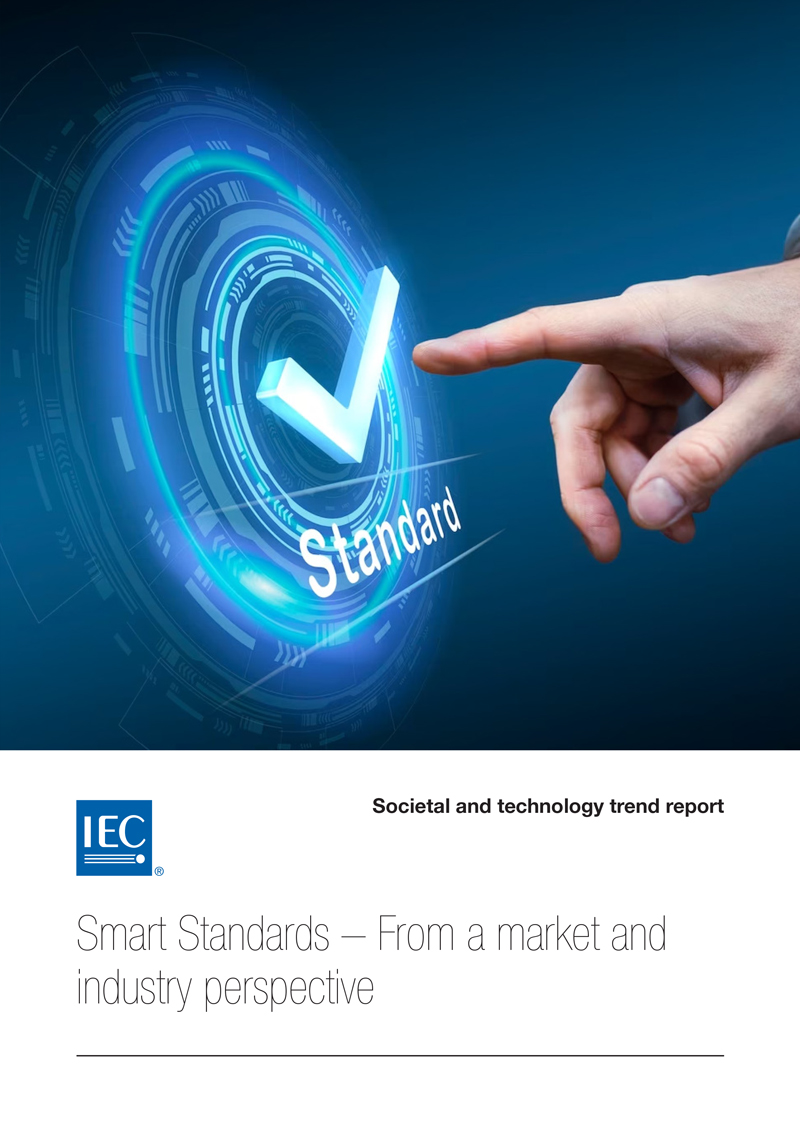Digital transformation, Smart Standards and Conformity Assessment
Vision & mission
What is Smart?
Benefits of Smart
Digital transformation collaboration hub
(restricted access)
#dtDigital transformation
IEC lies at the heart of the international standards evolution, guiding us as we redefine our business models and processes with cutting-edge technologies. It's about leveraging innovation to its fullest, whether it involves transitioning from one business model to another or optimizing existing operations.
Our journey into the digital age begins with the IEC Digital Transformation Programme — a dynamic initiative aimed at integrating digital technologies into every facet of our international standards and Conformity Assessment systems. Our goal is simple: to ensure that IEC remains not just relevant but a driving force in global markets.
The IEC Standardization Management Board, Market Strategy Board and Conformity Assessment Board are all contributing to Smart. We believe that Smart Standards and conformity assessment will fundamentally change how IEC operates and delivers value to our stakeholders.
#vision
Our vision and digital transformation strategy
is to evolve into a knowledge-based, global organization that provides not only a comprehensive digital platform but also an array of digital products, services and processes.
This transformation is geared toward fortifying our commitment to the worldwide community by delivering standards and conformity assessment services that are both timely and globally pertinent.
aligns with the digital era's demands, advancing methodically. By applying digital technologies across our processes, products, and services, we ensure the continued global relevance and impact of IEC International Standards and Conformity Assessment services.
Our goals: accelerate IEC's digital transformation, empower individuals digitally, create value, and maintain IEC's relevance.
include accelerating IEC and its members' digital transformation, empowering individuals in the digital sphere, nurturing value, and growth for both IEC and its dedicated members and ensuring IEC's enduring relevance in the evolving global standards and conformity assessment services landscape.
With these objectives guiding us, we journey toward a digitally empowered and globally impactful future.
Transforming digitally to serve our stakeholders
The benefits of digital transformation for industry and society are numerous. Artificial intelligence, big data, the Internet of Things and quantum technologies, for example, can increase efficiency and productivity.
Digital technologies can improve customer experiences and enhance innovation. Not only do they provide greater agility and flexibility, but also they help organizations reduce costs by automating processes, improving supply chain management and reducing waste.
Digital transformation provides organizations with access to real-time data and analytics, enabling them to make more informed and data-driven decisions. This has the potential to bring about positive social impact, such as improving healthcare outcomes, enabling access to education and information and reducing carbon emissions.
Overall, digital transformation has the potential to drive significant benefits for both industry and society. IEC provides the tools — consensus-based international standards and conformity assessment — to make it happen without leaving anyone behind.

IEC digital transformation journey
IEC has created a digital transformation programme which seeks to assess the impact and opportunity for innovative approaches and technologies to disrupt the current standardization ecosystem. The digital transformation programme has several key focus areas including:
Smart – the creation of digital standards to improve use, enable integration and drive future needs.
Adoption and use – support the adoption, distribution and ease of use of digital standards.
Conformity assessment – ensuring that digital standards interoperate with a digital CA future.
IEC has chosen an agile, test-driven approach to finding digital value fast. Starting with IEC members, understanding the customer/end-user need and value opportunity is the cornerstone of the journey. That, coupled with quickly pilot testing hypothesis, is fundamental to the IEC approach.

#smart
Smart Standards
Smart Standards represent a revolutionary shift in the world of standards.
While Smart Standards pave the way for a digital, machine-based future, they also enhance standards' usability for humans. Finding, understanding, and utilizing standards has never been this easy. They prioritize machine applicability, readability, and transferability. These standards are designed to be processed and understood by machines, offering a wide range of benefits:
Machine-applicable standards
Smart Standards automate processes, enabling machines to execute standardized instructions without human intervention. Imagine manufacturing and quality control processes running seamlessly
Machine-readable standards
Smart Standards foster interoperability between systems. Machines can effortlessly exchange data in structured formats like XML or JSON, streamlining data exchange across systems
Machine-transferable standards
Smart Standards facilitate the sharing of data and resources between machines through standardized protocols like HTTP or FTP, enhancing integration and collaboration
Machine-applicable standards
Smart Standards automate processes, enabling machines to execute standardized instructions without human intervention. Imagine manufacturing and quality control processes running seamlessly
Machine-readable standards
Smart Standards foster interoperability between systems. Machines can effortlessly exchange data in structured formats like XML or JSON, streamlining data exchange across systems
Machine-transferable standards
Smart Standards facilitate the sharing of data and resources between machines through standardized protocols like HTTP or FTP, enhancing integration and collaboration
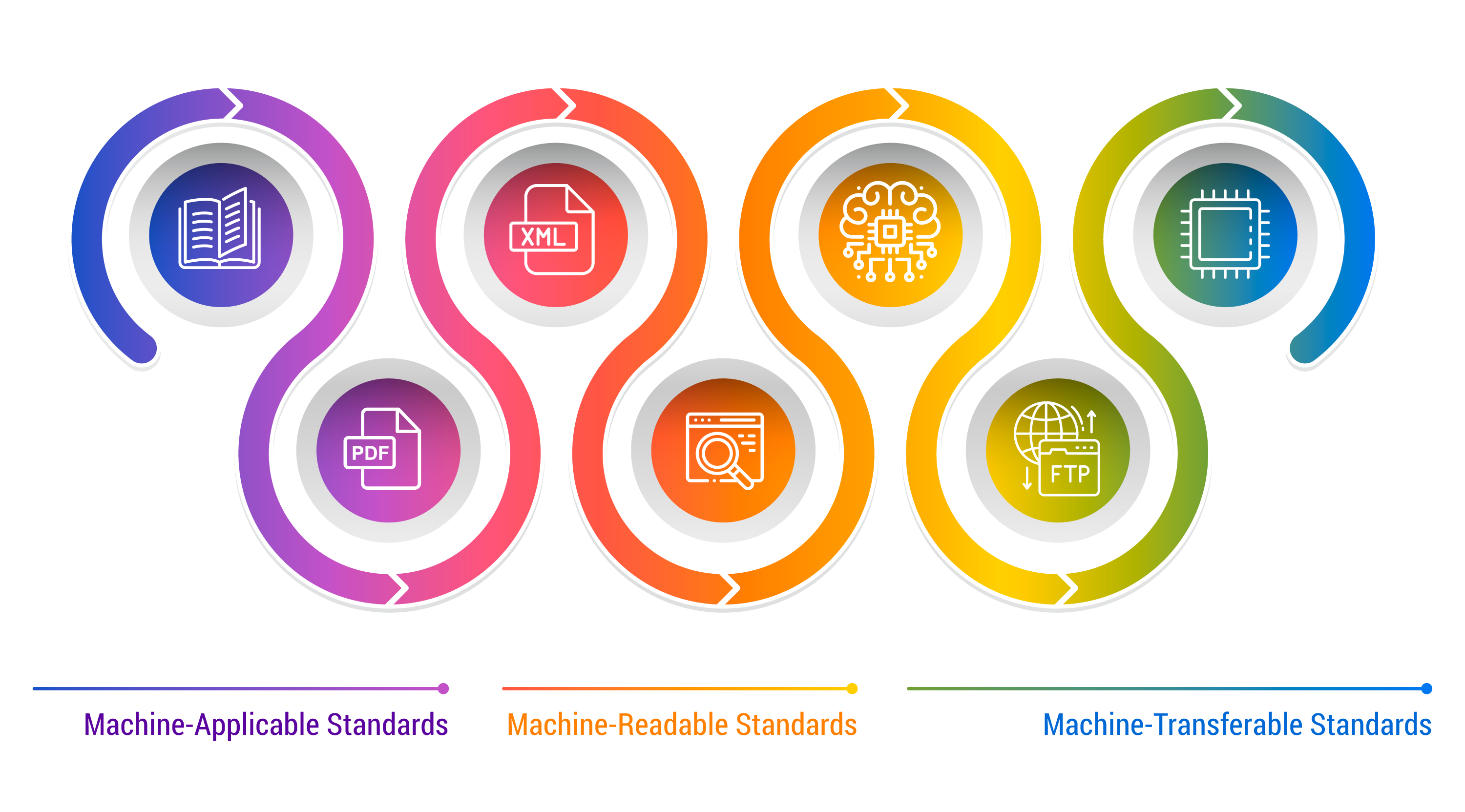
#benefits
Benefits of Smart
Smart Standards promise a multitude of benefits that will reshape the landscape of standards development and utilization
Click on each image to read the benefits:


Enhanced relevance
Smart Standards empower IEC and ISO to deploy digital solutions catering to the diverse requirements of stakeholders, spanning industry, regulatory bodies, end-users, and society
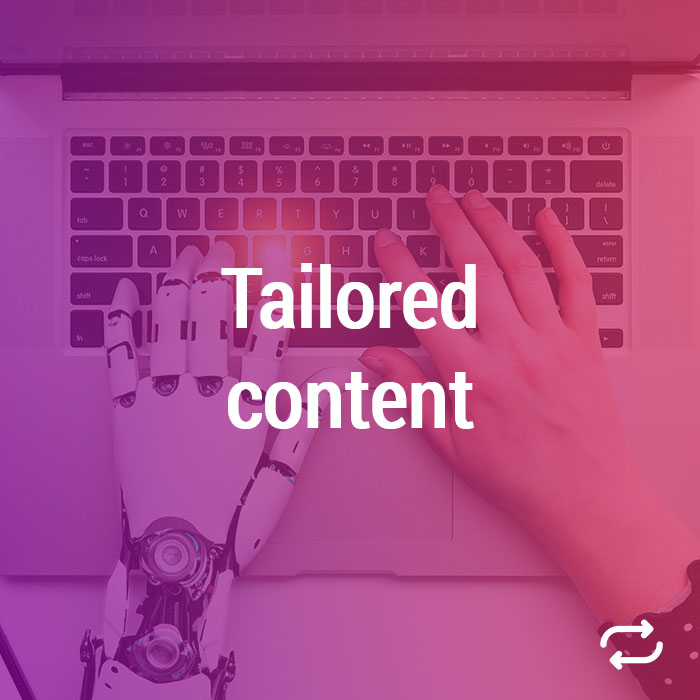

Tailored content
The forthcoming IEC and ISO standards offer precisely timed, customized content for both humans and machines


Streamlined development
Manufacturers can seamlessly integrate Smart Standards across their product and service life cycles, expediting development while reducing costs and ensuring compliance with current regulations
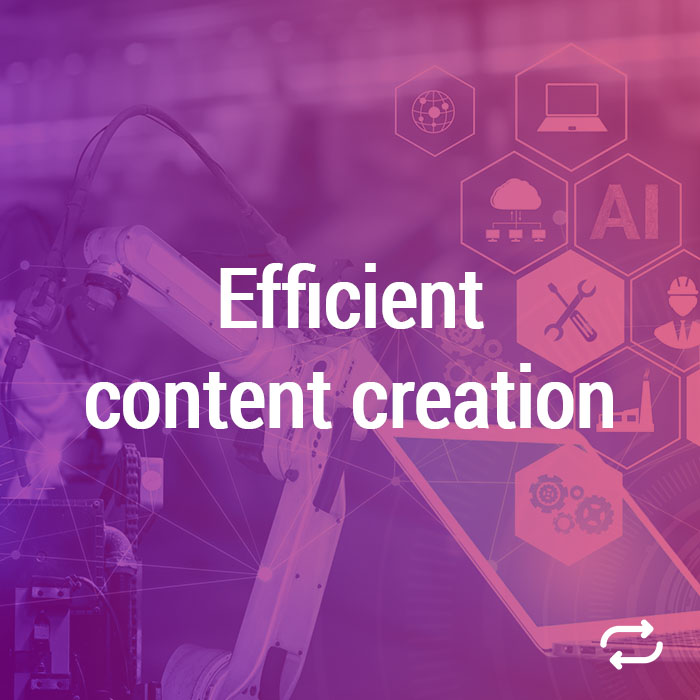

Efficient content creation
Standards developers can optimize content creation with modern authoring tools, automating processes throughout the development lifecycle
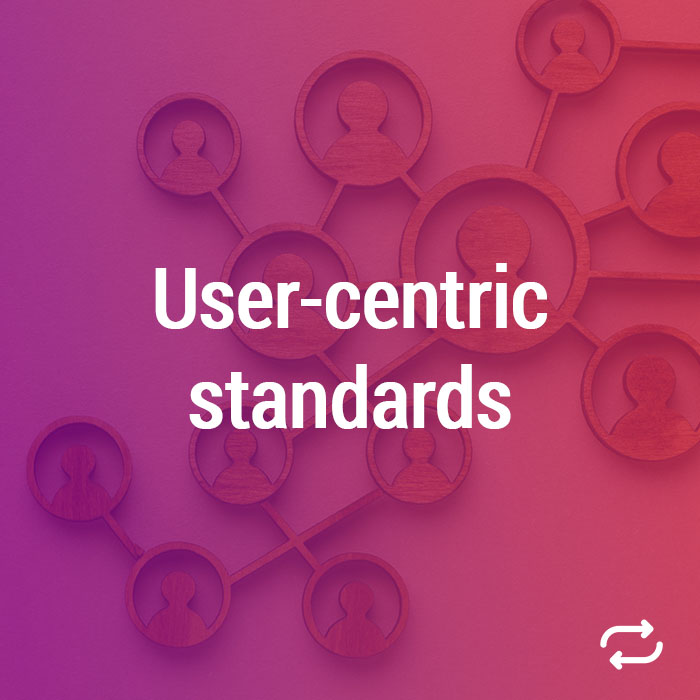
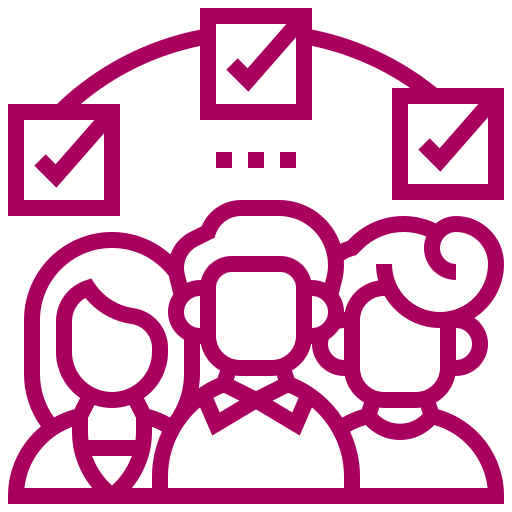
User-centric standards
End-users benefit from dynamic digital standards tailored to their specific needs, continually updated to ensure relevance
IEC latest blog articles
Upcoming events
IEC Academy webinars
Events
Other resources
- Digital transformation
- Semantic interoperability challenges digital transformation age
- Past webinars
- Digital transformation collaboration hub (restricted access)
#faqFAQ
Who will benefit from smart standards?
All stakeholders in the standardization ecosystem will benefit from Smart. From the end-user to the standard developer and everyone in-between, Smart will enable them to find the information they need in a much more effective way. Ultimately IEC/ISO Smart is a capability that powers users, Members, commercial companies, and others.
Can you provide examples of how different stakeholders will benefit?
- End users will benefit from digital standards whose content is tailored to their needs and constantly maintained up to date.
- Manufacturers will integrate Smart Standards into their entire product and service lifecycles to accelerate development at a lower cost and ensure compliance with the latest applicable regulations.
- Regulators will be part of the Smart ecosystem to ensure consistency between market driven standardization and policy guided regulations.
- Standards developers will focus on content creation in a much more effective way by using advanced digital tools automating processes over the whole development lifecycle.
Which standards will be affected?
First, regardless of Smart progress, if end-users want to continue to use standards in a PDF or XML format, the intention is to support those formats and needs. Of course, some standards need Smart faster than others. For example, those standards which already have code components may be faster adopters of Smart than others. Our goal is to make sure that all standards can benefit from the Smart approach but focus on those where there is a clear value first.
Will all countries and regions be able to benefit?
Yes! While there isn’t a mandate to “convert” to Smart, any country or region that wants to leverage Smart Standards, can.
Will I be able to continue obtaining standards as PDFs?
Regardless of Smart progress, if end-users want to continue to use standards in a PDF or XML format, the intention is to support those formats and needs.
Who will benefit from smart standards?
All stakeholders in the standardization ecosystem will benefit from Smart. From the end-user to the standard developer and everyone in-between, Smart will enable them to find the information they need in a much more effective way. Ultimately IEC/ISO Smart is a capability that powers users, Members, commercial companies, and others.
Can you provide examples of how different stakeholders will benefit?
- End users will benefit from digital standards whose content is tailored to their needs and constantly maintained up to date.
- Manufacturers will integrate Smart Standards into their entire product and service lifecycles to accelerate development at a lower cost and ensure compliance with the latest applicable regulations.
- Regulators will be part of the Smart ecosystem to ensure consistency between market driven standardization and policy guided regulations.
- Standards developers will focus on content creation in a much more effective way by using advanced digital tools automating processes over the whole development lifecycle.
Which standards will be affected?
First, regardless of Smart progress, if end-users want to continue to use standards in a PDF or XML format, the intention is to support those formats and needs. Of course, some standards need Smart faster than others. For example, those standards which already have code components may be faster adopters of Smart than others. Our goal is to make sure that all standards can benefit from the Smart approach but focus on those where there is a clear value first.
Will all countries and regions be able to benefit?
Yes! While there isn’t a mandate to “convert” to Smart, any country or region that wants to leverage Smart Standards, can.
Will I be able to continue obtaining standards as PDFs?
Regardless of Smart progress, if end-users want to continue to use standards in a PDF or XML format, the intention is to support those formats and needs.
When will Smart be ready?
Current plans include Smart pilots that are underway now and expected to showcase value and learning by the end of the year. Starting in 2024, we’ll begin scaling some of the key Smart Standards in order to be available towards the end of 2024. Of course, we’re also evaluating the surprising advances in generative AI tools, like ChatGPT, which could change our plans too.
Who is developing Smart?
IEC and ISO are working together on a joint programme by the to drive the Smart Standards. This work is being conducted in close collaboration with our Members and experts to ensure the best outcome. Other initiatives, outside of IEC/ISO, are also in progress to test and advance the concept. IEC and ISO try to be in contact with as many stakeholders as possible to share experiences.
To what extent is Smart likely to transform existing business models?
Like most digital opportunities, it’s not just the technology innovation which the IEC is focused on. The opportunity to adopt new business models which ensure the sustainability of the IEC while increasing the use of standards and enabling our key members and stakeholder is a priority. New business models will be tested out alongside new digital technologies and adopted where it makes sense.
Are you exploring regulatory issues related to Smart?
The balance between personalization and ease of use with Smart Standards and the need for predictable conformity assessments has been identified as a key area of concern. As part of the IEC/ISO Smart Programme, a joint team on conformity assessment has been assembled to delve into this plus other regulatory issues.
How can I get involved?
Contact IEC’s Digital Transformation Officer, David Nix to get involved.
When will Smart be ready?
Current plans include Smart pilots that are underway now and expected to showcase value and learning by the end of the year. Starting in 2024, we’ll begin scaling some of the key Smart Standards in order to be available towards the end of 2024. Of course, we’re also evaluating the surprising advances in generative AI tools, like ChatGPT, which could change our plans too.
Who is developing Smart?
IEC and ISO are working together on a joint programme by the to drive the Smart Standards. This work is being conducted in close collaboration with our Members and experts to ensure the best outcome. Other initiatives, outside of IEC/ISO, are also in progress to test and advance the concept. IEC and ISO try to be in contact with as many stakeholders as possible to share experiences.
To what extent is Smart likely to transform existing business models?
Like most digital opportunities, it’s not just the technology innovation which the IEC is focused on. The opportunity to adopt new business models which ensure the sustainability of the IEC while increasing the use of standards and enabling our key members and stakeholder is a priority. New business models will be tested out alongside new digital technologies and adopted where it makes sense.
Are you exploring regulatory issues related to Smart?
The balance between personalization and ease of use with Smart Standards and the need for predictable conformity assessments has been identified as a key area of concern. As part of the IEC/ISO Smart Programme, a joint team on conformity assessment has been assembled to delve into this plus other regulatory issues.
How can I get involved?
Contact IEC’s Digital Transformation Officer, David Nix to get involved.
#contactGet started with Smart Standards and be a part of our digital transformation journey





